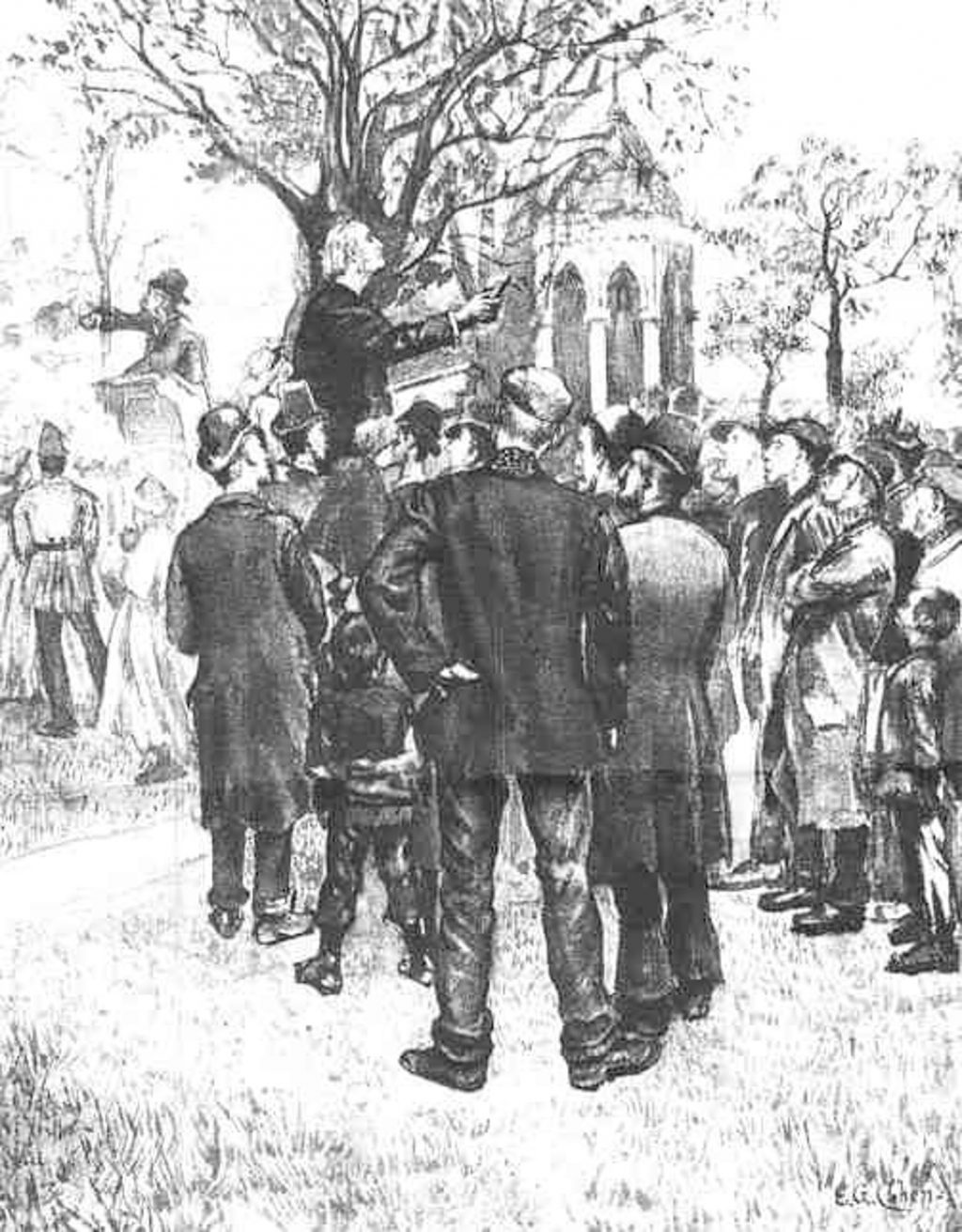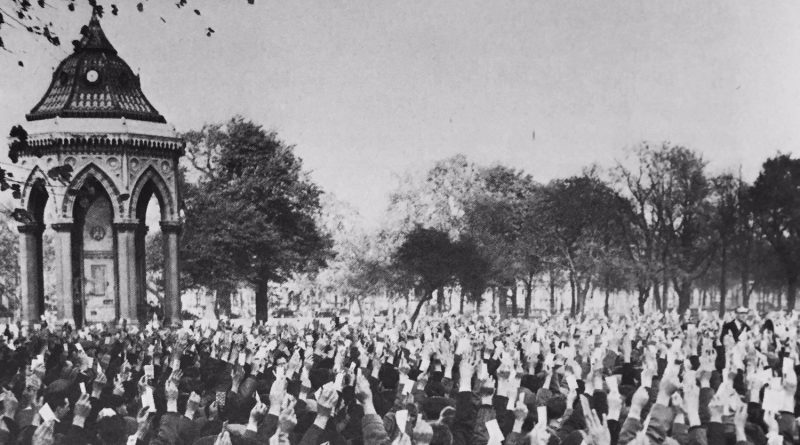The Forum at Victoria Park – East London’s answer to Speakers’ Corner
Just about everyone has heard of Speakers’ Corner in Hyde Park, but few know there was a time when Victoria Park blew it out of the water. At its peak ‘the Forum’ drew thousands of east Londoners together every Sunday to debate, pontificate, and discover.
Boasting dozens of speakers, appalled undercover policemen, a brass band, and a healthy amount of blasphemy, Victoria Park became a testing ground for working class thought at a time when the masses were starting to find their voice.
Radical origins
The spirit of the Forum predates Victoria Park. The north edge of the people’s park was partially built over Bonner’s Field, a notorious political meeting space for Chartists. When the park opened in 1843 the radical working classes of east London simply shuffled a few yards south.
Their new home was north east of Grove Road, where the Victoria Fountain sits today. As memory of Bonner’s Field faded, the space needed a new name of its own. Is was soon dubbed ‘the Forum’. As it flourished into a space for debate some came to call it ‘Forum and Agin-em.’
The Forum quickly became the go-to spot in east London for public meetings. In 1862 public meetings at the park without written permission were forbidden. The resultant deluge of letters soon brought about a reversal and a sign was placed on the Forum site saying meetings could be held without permission for as long as the park was open.
The East End open air school
The East End faithful had secured the future of their Speakers’ Field, and began making full use of its freedom. By the time Colonel J. J. Sexby visited the Forum in 1895 it was in the midst of its ‘golden age.’
‘Victoria Park on Sundays is one of the great revelations of outdoor life,’ Sexby wrote. ‘Close to Victoria Fountain is the place for public meetings, which is a regular sea of heads, where the working man can in their thousands crowd round their favourite speakers.’
Crowds gathered around speakers from National Secularist Society, the Social Democratic Federation, and the Independent Labour Party, amongst others.
Groups broke off to discuss hot topics of the day amongst themselves. It was not uncommon for a brass band to roll up and compound the festival atmosphere.
As the 1862 effort to shut down the Forum showed, authorities weren’t always thrilled by the phenomenon. Squeamish undercover policemen wove through the crowds and filed reports of radical thought and blasphemous talk.
It was the perfect backdrop for the open exchange of ideas, especially in the summer months. Revolutionary leaders were drawn to the Forum like bees to honey. Bernard Shaw, Sylvia Pankhurst, William Morris, John Burns, Annie Besant, Tom Mann, and Ben Tillet all took to the soapbox in the shadow of Victoria Fountain.
The high footfall also made it a prime distribution spot for written material. Sylvia Pankhurst’s newspaper Workers’ Dreadnought was sold there weekly during its run between 1914 and 1924.
It was at the Forum that an enterprising chap called William Carter distributed the short-lived Victoria Parker there, followed by the even shorter lived Victorian Barker. ‘Honest men.’ it asked, ‘will you be ruled by Thieves?’
Every speakers’ corner (or field, in this case) has its fair share of tangled characters, but a recurring ethos of the Forum was that of education, of the open exchange of ideas. It was where east Londoners came to learn, to challenge and be challenged. It became, as historian Charles Poulsen put it, ‘the school in which the intelligent young men and women of the East End learnt about the society they lived in, their place in it, and how it could be changed for the better.’
Forum alumni
Save for the odd spike from one-off events, attendance to the Forum declined after World War II. It died, as Poulsen put it, a ‘natural death’ after a long, vibrant life. Now that Twitter has stepped in as way for people to argue in public a return to the glory days seems unlikely, but you never know.
In truth, the Forum never went away. It was a testament to the intellectual curiosity of east London’s working classes. For close to a century thousands chose to spend their day of rest before the soapbox. The thirst for knowledge that drove people to the Forum was where its magic truly lay. All those with open minds, thick skins, and wagging tongues are alumni of its heyday.

If you liked this piece you may like reading about the Victoria Park alcoves


